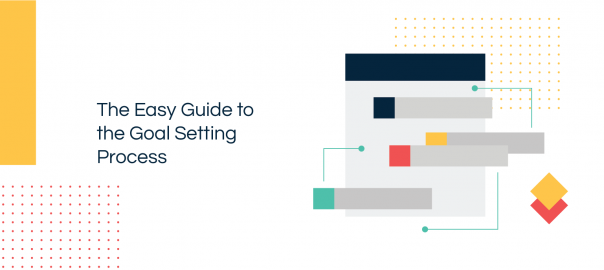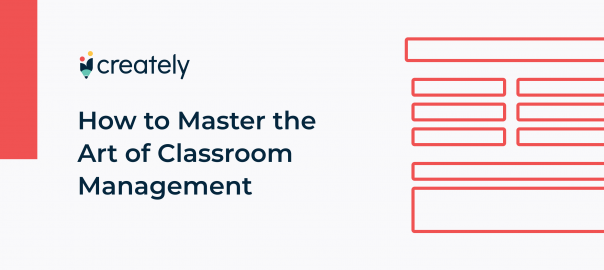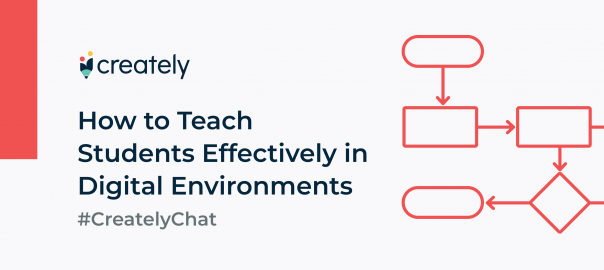A well-designed lesson for online teaching helps promote student learning, retention, and engagement. Whether you are creating learning material for your remote learning students or designing an online course for a potential target audience, the following online lesson planning practices we have listed below will help you do it successfully – by creating something that meets the needs of all students.
Understand Your Students
One thing that sets apart an online course from an online classroom is the audience.
In your virtual classroom, your audience is made of students you know well and they are generally of the same age and circumstances. As you are already aware of their learning patterns, strengths, and weaknesses, it’s easier for you to create a lesson plan template to suit their needs.
In case you are not, you can start by evaluating their existing knowledge with a quiz, or simple quick activity like a concept map.
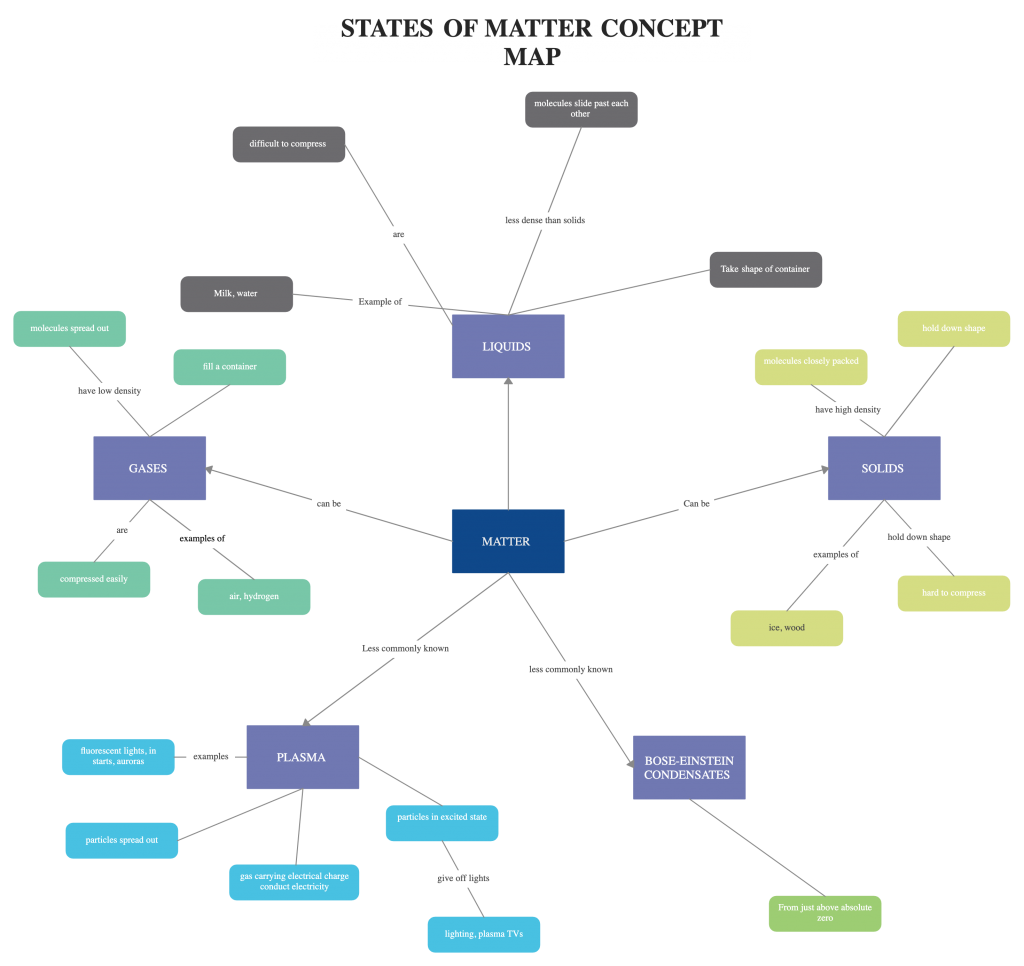
(Duplicate the concept map above and share it with your students to work online. Use synchronous editing to collaborate with them in real-time and in-line comments to leave feedback)
However, those who take an online course can come from anywhere in the world, speak different languages, and have different reasons for learning the subject you are offering. Therefore, taking that extra time to really examine who your audience is, can help you design a course that will offer true value to them.
Set a Clear Objective for the Lesson
A clear objective is essential to stay focused throughout the course-plan of your lesson, and it should be emphasized to your students at the very beginning to help them stay on track.
The objective of your lesson should focus on what your students will be able to achieve at the end of it. For example, it may be to help your students learn a new skill or learn about a new concept. To set a clear objective, try starting with “I want my students to be able to…”
This will simplify the process of specifying the content, as what should be included in your lesson is what will eventually help your student achieve the defined objective.
Incorporate Visuals, Visuals, and More Visuals
Retaining the attention of students while teaching to a class face-to-face is hard enough. How can you make an impact when you are not even there?
Research has shown that humans tend to remember 80% of what they see while only 20% of what they read and 10% of what they hear, which is why visuals have an important role to play in teaching, especially when it’s done online.
A few ways you can incorporate visuals into your lessons include;
- Replacing written instructions with videos. Instead of emailing them a document explaining something, create a quick video explaining things. You can add captions and transcriptions (which students with hearing disabilities would find useful) to your videos to provide guidance and to highlight important areas your audience should remember. If you find it too time-consuming to create a video or if you are in a rush, you may be able to find a relevant video that already exists on the internet. A few places to look include
- Graphic organizers are another great way to both simplify a complex concept and grab your students’ attention during the lesson. A comprehensive list of graphic organizers for reading, writing, comparing, etc. can be found in our Ultimate List of Graphic Organizers for Teachers and Students.
- Use an online whiteboard. In class, you can always rely on your whiteboard/ blackboard to sketch out or diagram an idea when it’s too complex for words. With an online whiteboard, you can do the same. Creately is widely used by educators in their online classes for this purpose; it’s infinite online canvas, access to shape libraries for over 50+ diagram types, and pre-made templates let them easily visualize what they need for their lesson. Additionally with its in-app video conferencing you can literally host the class in Creately itself while collaborating with students on the same canvas with synchronous editing.
- Presentations are great visual tools for engaging students in class as well as online. While you can explain an entire lesson using a presentation, you can also use it to assist highlight important facts, during your online lecture. You also have the option to create narrated presentations with a tool like Prezi.
- Make use of visual props during an online lecture. Props can vary from flashcards to real-life items that you can find in your home. For example, if you are teaching about different types of nutritional food, you can definitely find a few props in your home.
Keep Your Teaching Modules Short
Timing is crucial in online learning.
A lengthy online lecture may easily disengage the student and make it harder for them to digest information. Therefore it is important to keep things brief and interesting.
- Use a variety of visual elements into your lessons/ course as we discussed above. Visuals will help simplify difficult areas that would otherwise require you to talk at length.
- Segment the lesson content. For example, you can create a short video tutorial series or a blog post series with which you can deliver the lesson in smaller parts, that students can view or read at their own pace.
- Flip your classroom. The flipped classroom approach is proven to increase student engagement and retention, especially for online learning. Here, you allow students to do the in-class activities (watching video lectures, reading documents, or listening to a podcast) prior to the actual class while assisting and guiding them as they do their homework during the class. This way you can leave the boring lecture-part of the lesson for students to go through at their own pace and make use of in-class time in a more productive way.
Keep a Clear and Consistent Structure
A consistent and clear structure is important to keep students engaged and focused. An easier way to maintain a clear and consistent structure throughout your lesson or course planning is by creating an overview outlining all modules, tasks, tools, due dates, etc. at the beginning. In other words, develop a solid lesson plan. This will help you identify thematic topics and arrange them accordingly as modules or units with a good flow.
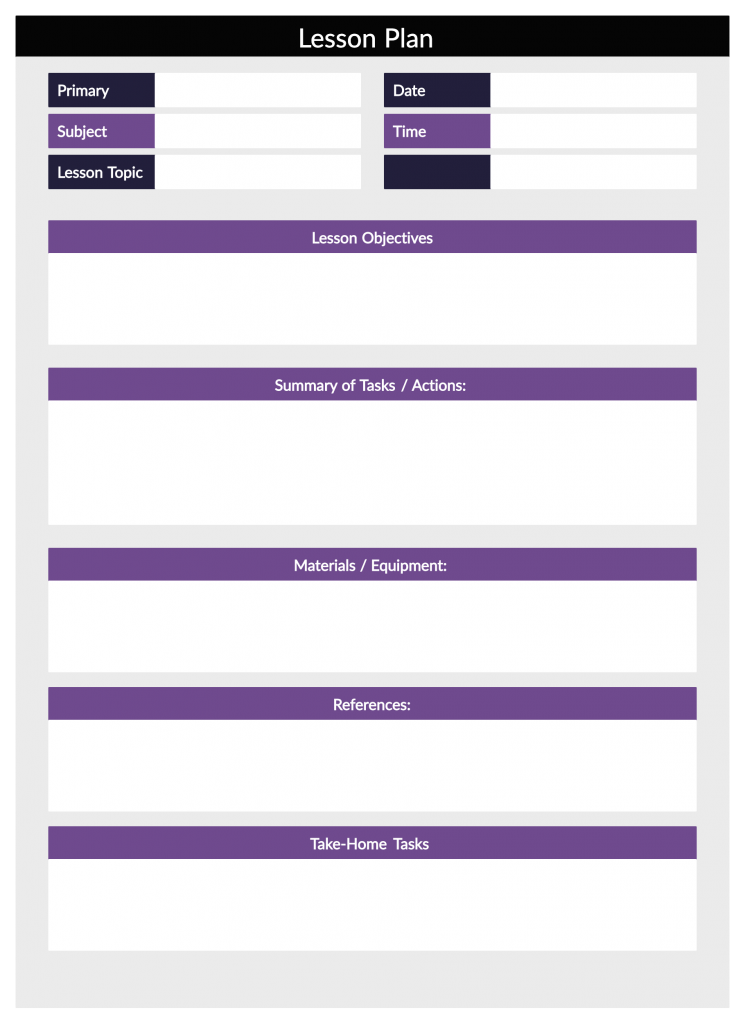
In addition, to help out the students, you can,
- Keep a central location to store all lesson material, assignments, and other resources and make it easily accessible to all students. You can use a file storage system like Google Drive or your own school’s learning management system, to do this.
- Create a checklist of what content (chapters, modules, units, etc.) will be taught each day or week. Along with the checklist, you can also include the assignments they will be doing and the resources and tools they can refer to. You can create this along with your lesson plan and share it with your students to help them keep up with their own work.
Add Assignments and Homework
Assignments are a significant part of learning and are an effective way to evaluate the student based on what they have learned. In online learning, you can do this by,
- Including collaborative activities. Getting students to work in groups and interact with each other as they work toward grasping something can improve their understanding and enhance their recollection. Provide the necessary platforms to aid this; i.e. a communication platform such as Slack or a Facebook Group for students to chat with each other, and share resources, or an online discussion board.
- If cheating during online assignments is something you are worried about, you can include activities that get students to do research and create, such as case studies, concept maps, videos or presentations, speeches, etc.
Evaluate, Reflect and Revise
How to determine what works and what doesn’t during online lesson planning? Evaluating the strategies, content, and tools you are using to deliver a class online and revising them accordingly is essential to improve the learning environment of your students, whether online or in-person.
The more you assess and reflect, the more successful you will be in creating learning material or an entire course that will truly resonate with your students. To do so,
- You can use an instructional design model like the ADDIE (analyze, design, develop, implement, and evaluate) model to effectively assess the performance of your course or lesson content.
- You can also encourage students to share their feedback in order to get an idea of what was effective from their own perspective.
Based on your analysis, you can then proceed to make the necessary adjustments to your content to better engage students.
Any Tips on Online Lesson Planning?
How far you know your learners or audience will go a long way in helping you create engaging learning material. While there are many ways to create and deliver your content online, it’s important to have a proper plan outlining how you should go about it and select the correct method to incorporate it.
We hope the practices for online lesson planning above will help you create engaging learning material or courses for your lessons. If you have more online lesson planning tips to add, let us know in the comments section below.

